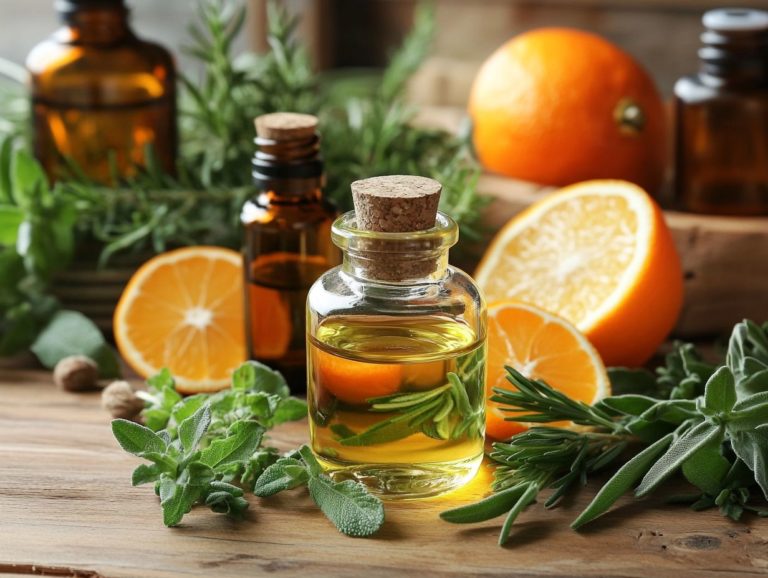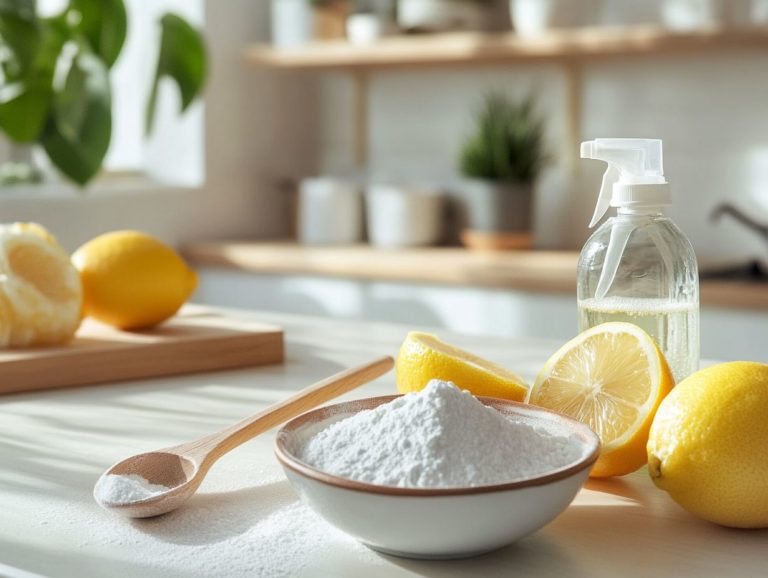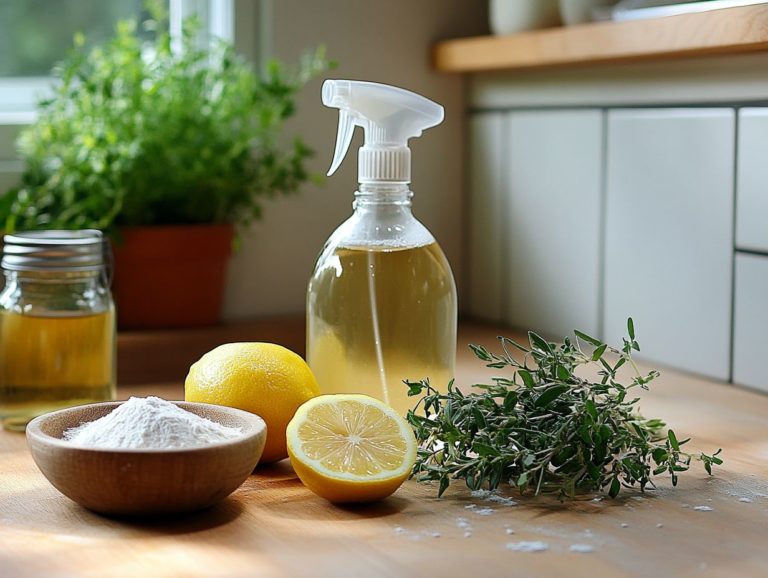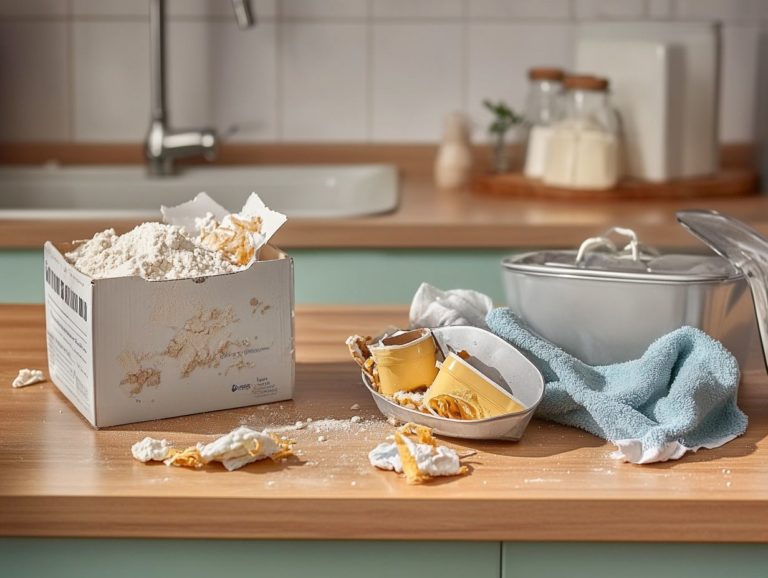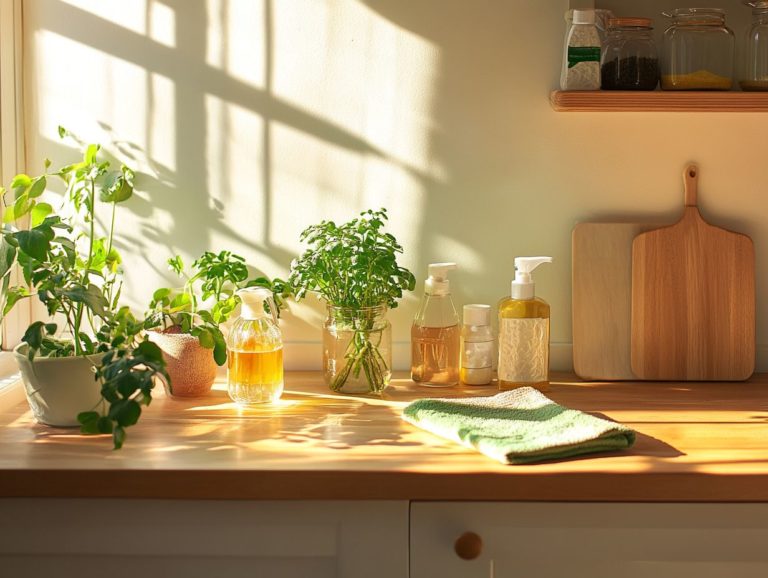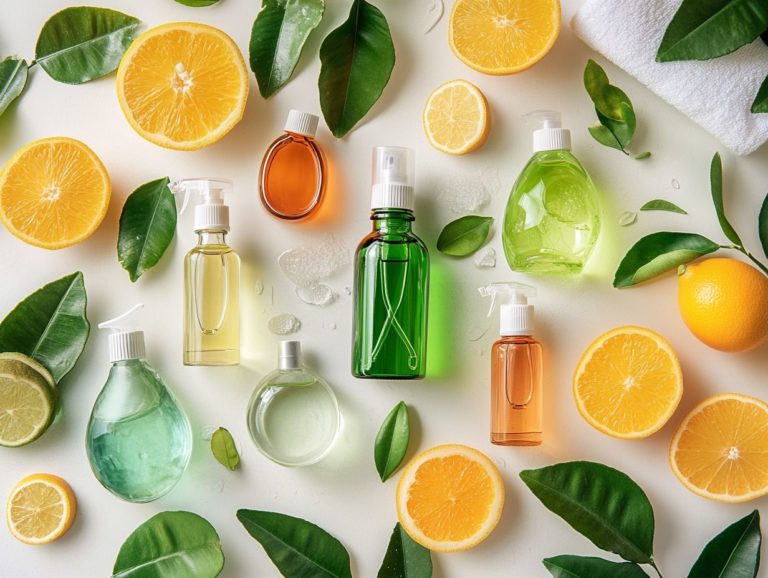5 Surprising Uses for Rubbing Alcohol
Rubbing alcohol is a remarkably versatile household essential that goes beyond being just a first aid remedy.
Explore five unexpected applications for rubbing alcohol, ranging from its effectiveness in cleaning and disinfecting surfaces to soothing those annoying bug bites. You ll uncover practical tips for tackling stubborn stains, crafting your own hand sanitizer, removing pet odors, and effortlessly removing nail polish.
This guide will clarify what rubbing alcohol truly is, outline essential safety precautions, provide tips on using it as a DIY deicer, and highlight how it differs from other types of alcohol. Get ready to discover the amazing potential of this everyday item!
Contents
- Key Takeaways:
- 1. Cleaning and Disinfecting Surfaces
- 2. Removing Stubborn Stains and Grime
- 3. Soothing Bug Bites and Skin Irritations
- 4. DIY Hand Sanitizer
- 5. Removing Nail Polish
- What Is Rubbing Alcohol and How Is It Different from Other Types of Alcohol?
- Frequently Asked Questions
- What are some surprising uses for rubbing alcohol?
- Can rubbing alcohol be used as a cleaner?
- How can I use rubbing alcohol to clean my electronic devices and tackle marker stains?
- What are some surprising uses for rubbing alcohol in the kitchen?
- How can I use rubbing alcohol to freshen up my laundry?
- Can rubbing alcohol be used as a DIY hand sanitizer?
Key Takeaways:
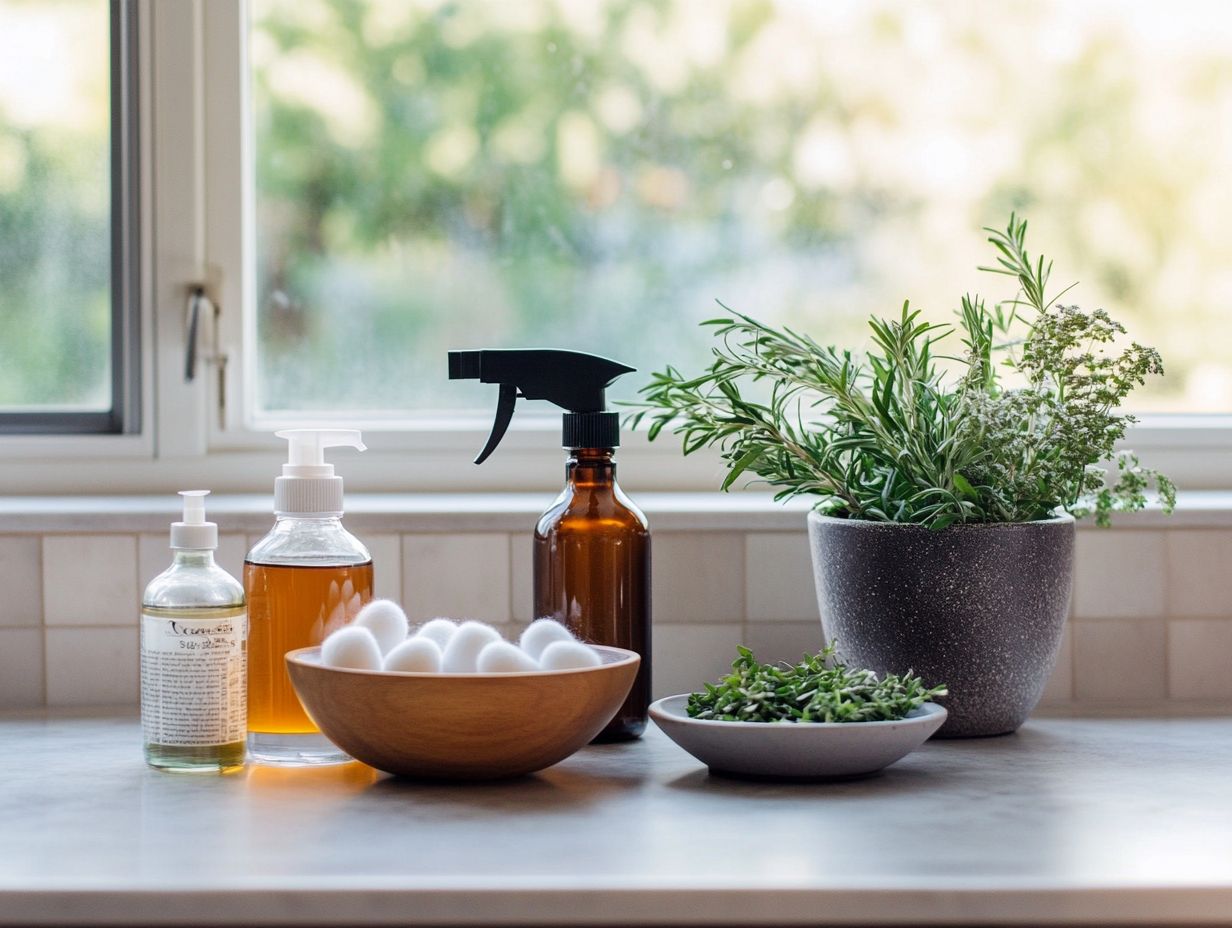
- Rubbing alcohol is a versatile and multipurpose household item that can be used for cleaning, disinfecting, and first aid purposes.
- It is an effective and affordable solution for removing stubborn stains, grime, pet odors, and even nail polish.
- Rubbing alcohol can provide relief for bug bites and skin irritations, and it can be used to make DIY hand sanitizer, household cleaners, and air fresheners.
1. Cleaning and Disinfecting Surfaces
Cleaning and disinfecting surfaces are crucial for maintaining a healthy home. Regular cleaning is essential for a healthy home, especially during the cold and flu seasons when germs and bacteria love to hang out on frequently touched areas.
By using effective household cleaners like rubbing alcohol, you not only ensure that surfaces are sanitized but also tackle those pesky indoor odors that tend to accumulate over time. Consulting trusted sources such as Martha Stewart Living, Real Simple, and Health magazines can guide you in selecting the right techniques and products for an impeccable clean.
Diving into various cleaning methods reveals that rubbing alcohol shines on non-porous surfaces, like counters and doorknobs, which do not absorb liquids, making them easy to clean. It evaporates quickly, reducing the risk of moisture buildup that could lead to mold growth.
Don t underestimate the role of disinfecting sponges, which are special sponges designed to kill germs and bacteria. They re essential for removing dirt and grime and can be rinsed and sanitized to keep bacteria at bay.
Keeping your windows clean is another important task that often flies under the radar. Expert Mary Cornetta highlights that sparkling windows not only elevate your home s aesthetic but also let in natural light, creating a warm and inviting atmosphere.
By giving regular attention to these areas and winter-proofing your windows, you re laying the groundwork for a clean and healthy living environment while combining insights from publications like House Digest.
2. Removing Stubborn Stains and Grime
Removing stubborn stains and grime can truly transform the appearance of your home, bringing new life to items that seem beyond repair. Rubbing alcohol is your versatile ally in this endeavor, expertly tackling tough marks like permanent ink and unyielding stains on a variety of surfaces.
This common household hero can be applied directly to the stained area with a clean cloth or cotton ball, effectively breaking down the inks for easy removal. But the magic of it doesn t stop at stains; it can also revitalize your sneakers by acting as a shoe deodorizer, banishing unwanted odors with remarkable ease.
It works wonders on stainless steel appliances and chrome fixtures, restoring their shine while effortlessly wiping away fingerprints and smudges. This remarkable substance does it all, perfect for cleaning glass, disinfecting countertops, and even sanitizing your electronic devices.
It s a must-have tool for every cleaning routine and can benefit other everyday items like upholstered furniture, laminate flooring, and various types of flooring.
3. Soothing Bug Bites and Skin Irritations
Sooth those irritating bug bites quickly with these simple DIY treatments. Rubbing alcohol serves as a quick remedy to alleviate discomfort and reduce the risk of infection. Just apply it to the affected areas, and you’ll feel the relief wash over you instantly!
This common household item has antiseptic qualities, making it an effective solution for cleaning and disinfecting irritated skin. To elevate its soothing effects, consider mixing it with essential oils like lavender or tea tree oil. These oils not only add a delightful fragrance but also offer additional anti-inflammatory and healing benefits.
When you’re faced with pesky bug bites and bedbugs, the combination of rubbing alcohol and essential oils can help relieve itching and promote faster healing. You can also pair this treatment with other remedies, such as cold compresses or oatmeal baths, which provide even more relief. This allows you to adopt a holistic approach to tackling skin irritations.
4. DIY Hand Sanitizer
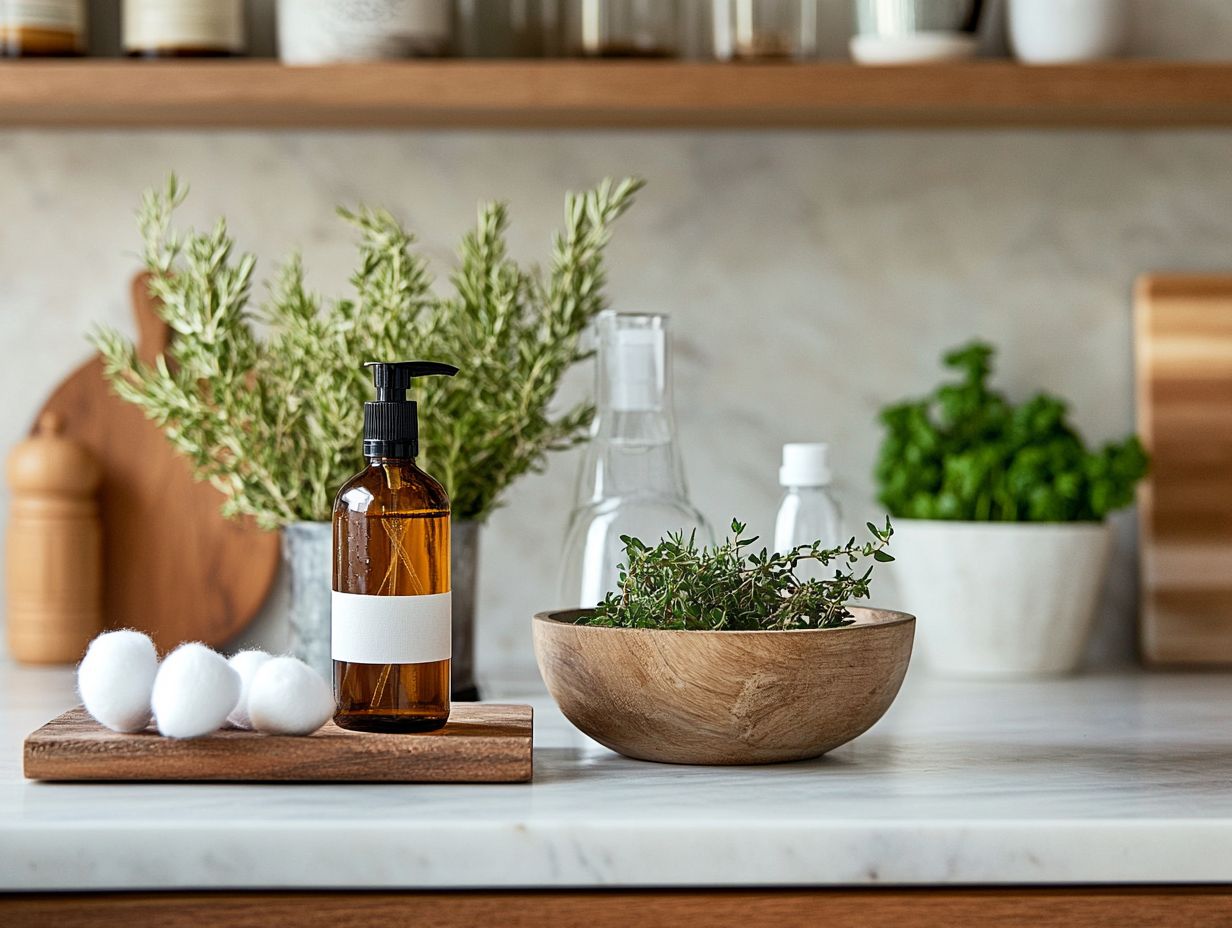
Creating your own DIY hand sanitizer is easy and a smart way to ensure you always have a reliable household cleaner, especially when commercial options are scarce. Rubbing alcohol is your key player here, delivering outstanding disinfecting power.
By blending it with aloe vera gel, you craft a solution that not only sanitizes but also hydrates your hands, warding off uncomfortable dryness. Start with high-proof rubbing alcohol, which contains a high percentage of alcohol, typically over 60%, for optimal effectiveness. The ideal ratio is three parts alcohol to one part aloe vera gel, allowing your mixture to retain its disinfecting prowess while benefiting from the soothing properties of aloe.
If you’re feeling adventurous, add a few drops of essential oils like lavender or tea tree for a delightful scent and an extra boost of antibacterial properties. With just a few simple ingredients and an easy-to-follow process, having your own homemade sanitizer at your fingertips becomes a practical and elegant solution for maintaining cleanliness on the go. You can also create other products like a DIY deicer or air freshener using similar methods.
5. Removing Nail Polish
Removing nail polish may seem like a daunting task, but with the right techniques, you can efficiently eliminate stubborn polish without damaging your nails or the surrounding skin.
Using rubbing alcohol serves as a safer alternative to traditional acetone removers, which can be too harsh and lead to dryness and irritation. To apply, soak a cotton ball or pad in rubbing alcohol and gently press it against your nail for a few seconds before wiping away the polish. If you encounter particularly tough spots, applying a bit of extra pressure can help break down the residue.
After you’ve finished, take a moment to moisturize your hands and nails to keep them looking healthy and vibrant. Interestingly, rubbing alcohol is versatile enough to double as a makeup brush cleaner, ensuring your beauty tools remain in pristine condition.
What Is Rubbing Alcohol and How Is It Different from Other Types of Alcohol?
Rubbing alcohol, scientifically known as isopropyl alcohol, is different from other alcohols due to its remarkable disinfectant properties and effectiveness as a household cleaner. It is a must-have in every home, especially when combined with ingredients like vinegar or essential oils for enhanced cleaning capabilities.
From removing fruit flies to acting as a marker makeover, its applications are nearly limitless. This versatile solvent has a chemical structure of three carbon atoms, eight hydrogen atoms, and one oxygen atom, which plays a significant role in its effectiveness across various cleaning tasks.
Unlike ethanol, another common alcohol, isopropyl alcohol dries fast and leaves minimal residue, making it ideal for sanitization. It s not just for disinfecting surfaces; it s also your go-to for removing stains, cleaning electronics, and even soothing minor skin irritations.
Mixing rubbing alcohol with vinegar creates a powerful multipurpose cleaner a cleaner that can be used on various surfaces that effortlessly tackles grease and grime. By adding just a few drops of essential oil, you can elevate its cleaning power, infusing your space with pleasant fragrances while fighting off bacteria. This blend can also function effectively as a window cleaner. This combination is particularly favored by households that prioritize eco-friendly solutions.
What Are the Different Types of Rubbing Alcohol?
The various types of rubbing alcohol, categorized by their concentration levels, significantly influence their effectiveness for different household cleaning tasks. 70% isopropyl alcohol stands out as the go-to choice for effective sanitization.
This concentration excels at disinfecting surfaces and eliminating germs because it has just the right amount of water to slow down evaporation. This allows it to penetrate the cell walls of bacteria and viruses, ensuring a thorough clean.
In contrast, 90% isopropyl alcohol, with its higher concentration, shines in situations that demand rapid evaporation and a more potent germicidal action. It s perfect for electronics and other sensitive materials that can t be dampened with excess liquid.
To achieve optimal results, it’s vital to match the concentration to the specific cleaning task at hand, ensuring that your surfaces are not only protected but also thoroughly disinfected.
What Are the Safety Precautions When Using Rubbing Alcohol?
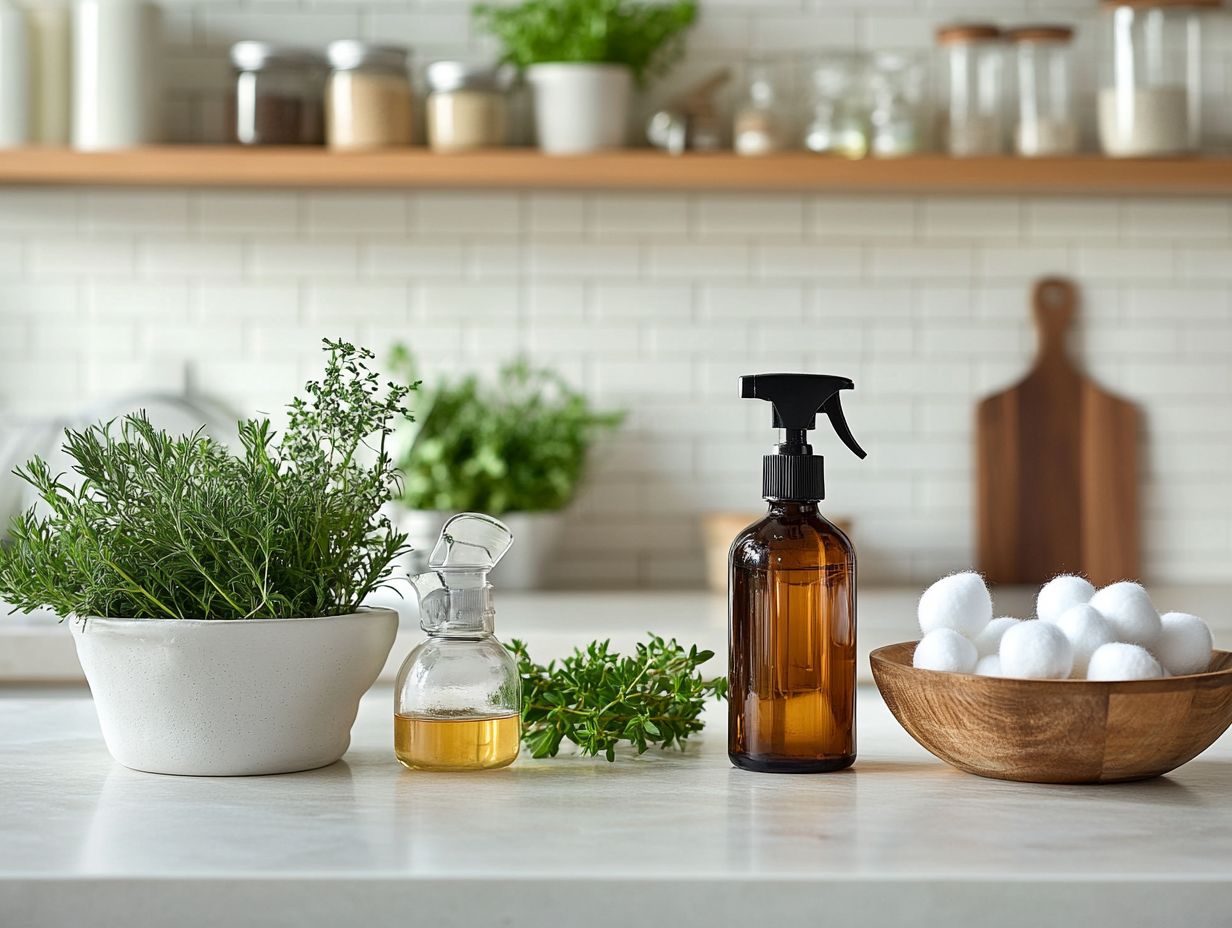
When using rubbing alcohol, it’s crucial to adhere to safety precautions to prevent accidents and ensure effective use. Keep it away from open flames and work in well-ventilated areas.
Additionally, store the alcohol securely in a cool, dry place, out of reach of children and pets, as well as household cleaners, to prevent any accidental ingestion.
Careful handling is necessary to minimize the risk of skin irritation, as prolonged exposure can lead to dryness or allergic reactions. Ensuring good ventilation helps dissipate any harmful fumes, significantly reducing the risk of inhalation hazards.
By observing fire safety protocols such as maintaining a safe distance from sparks or heat sources you can further enhance safety during use. Using rubbing alcohol as an air freshener helps keep your environment clean and pleasant.
How Can Rubbing Alcohol Be Used for First Aid?
Rubbing alcohol is an essential ally in your first aid arsenal, expertly designed to cleanse minor cuts, scrapes, and skin irritations, thanks to its potent antiseptic properties. For more tips and tricks, browse through health magazines that offer a range of home remedies and DIY treatments.
This remarkable substance not only promotes healing but also acts as a formidable barrier against infections.
When you apply rubbing alcohol to a wound, it quickly eradicates harmful bacteria and pathogens, creating a cleaner environment that fosters proper healing. To elevate your first aid kit beyond just rubbing alcohol, consider incorporating:
- Bandages
- Antibiotic ointments
- Sterile gauze pads
These elements work in harmony to provide a thorough approach to injury management. Experts like Savannah from health magazines also recommend keeping a bottle of rubbing alcohol handy for quick disinfecting tasks around the house.
The combination of these tools with rubbing alcohol s swift-drying characteristics and disinfecting prowess allows you to tackle minor injuries with ease and efficiency. By utilizing this curated selection of supplies, you can not only treat wounds effectively but also minimize the risk of complications that stem from inadequate care. For additional advice on first aid, you might consider insights from experts like Mary Cornetta or publications such as House Digest, Martha Stewart Living, and Real Simple.
What Are Some Other Surprising Uses for Rubbing Alcohol?
Beyond its traditional applications, rubbing alcohol reveals a multitude of surprising uses, proving itself to be an effective tech cleaner for smartphones, a makeup brush cleaner, and a jewelry cleaner capable of restoring the brilliance of your accessories. It also serves as a shoe deodorizer and can help eliminate indoor odors and pet odors.
In the world of electronics, a simple swipe of this versatile solution can effectively banish dust and smudges, all without risking damage to sensitive screens. In terms of jewelry, a quick soak in rubbing alcohol, followed by a gentle polish with a soft cloth, can revive even the dullest pieces to their former glory. It also works wonders in deodorizing upholstery, making it an excellent choice for refreshing your furniture.
To ensure optimal results, be sure to clear surfaces of moisture and dirt before application, and allow for sufficient drying time to prevent any residue from diminishing the final appearance.
How Can Rubbing Alcohol Be Used in Cleaning and Household Tasks?
Rubbing alcohol is your secret weapon in the realm of household cleaning, effortlessly tackling a variety of tasks, from disinfecting surfaces to erasing pet odors and deodorizing upholstery, all while showcasing its essential role in maintaining your home s cleanliness. It can also be used as a window cleaner and for disinfecting sponges.
In terms of laminate floors, a simple mixture of rubbing alcohol and water can bring back their shine and banish built-up grime. It can also be utilized to treat areas affected by bedbugs and for removing permanent marker from surfaces.
Just imagine rejuvenating your floors with minimal effort.
This remarkable solution doesn t stop there; it can also deodorize your spaces. A light spray in the air or on fabrics can neutralize unpleasant smells in a snap, leaving your home smelling fresh.
And if you ve got stubborn stains on your upholstery, fear not a small dab of rubbing alcohol can lift ink or grease spots without compromising the fabric s integrity. It s also effective for winter-proofing windows and cleaning stainless steel and chrome fixtures around your home.
For the best results, it s wise to test any solution on a discreet area first, ensuring that it s safe for the surface you re cleaning. With just a few drops on a cloth, you can effectively handle everyday spills or breathe new life into a room, transforming cleaning tasks into a simpler, more efficient endeavor.
Frequently Asked Questions
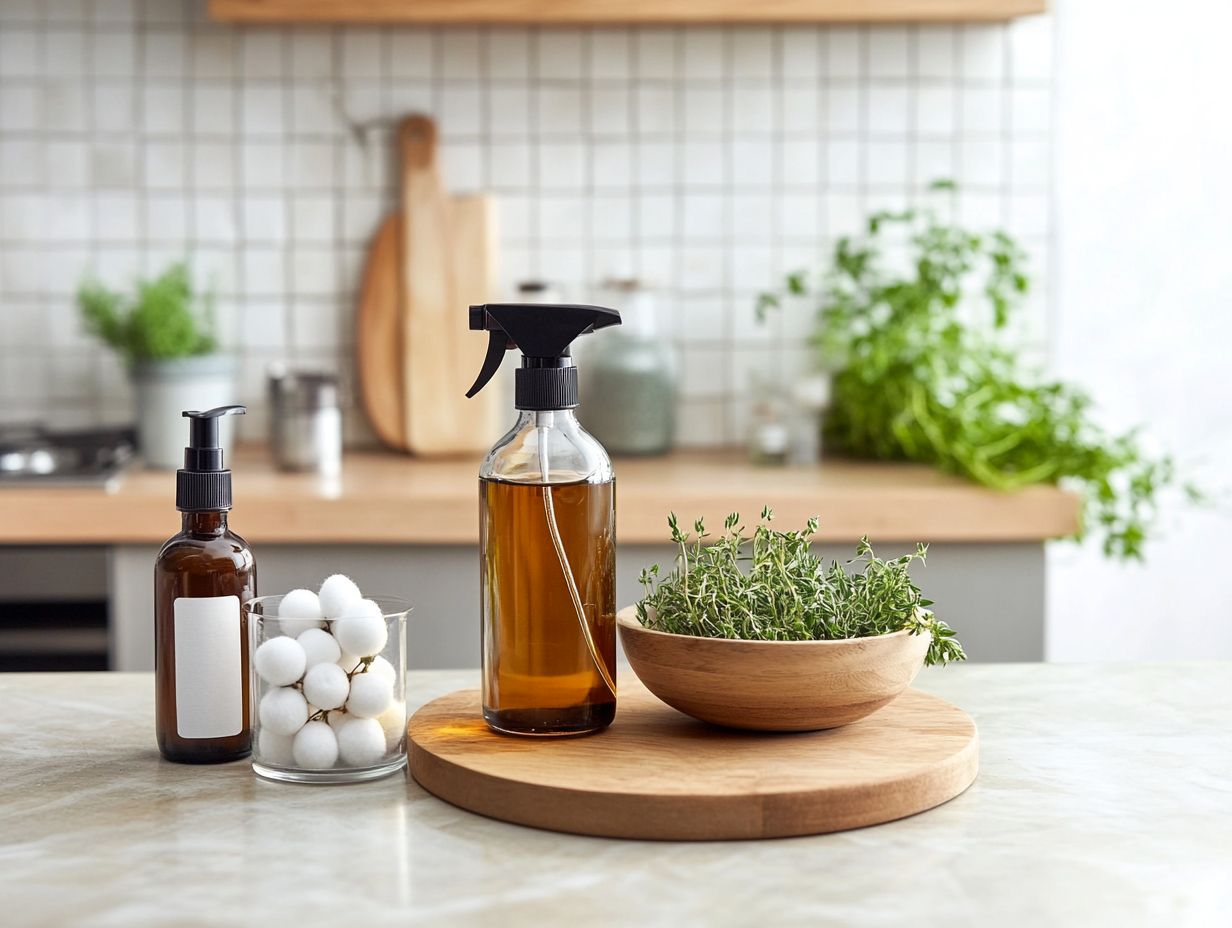
What are some surprising uses for rubbing alcohol?
Rubbing alcohol, also known as isopropyl alcohol, has many surprising uses beyond just disinfecting wounds. Here are five unexpected ways you can use rubbing alcohol.
Can rubbing alcohol be used as a cleaner?
Yes, rubbing alcohol is an effective cleaner. It removes dirt, grease, and grime from surfaces, and it kills germs on sponges and kitchen surfaces.
Its high alcohol concentration helps lift away hard-to-remove marks.
How can I use rubbing alcohol to clean my electronic devices and tackle marker stains?
Rubbing alcohol is perfect for cleaning electronics. It evaporates quickly and won t damage sensitive parts.
Just dampen a cloth and gently wipe down your phone, keyboard, or other devices to eliminate dirt and bacteria.
What are some surprising uses for rubbing alcohol in the kitchen?
Rubbing alcohol is a handy tool in the kitchen! Use it to remove stubborn stickers from jars and clean your cutting boards.
It s also great for wiping down stainless steel appliances and keeping your kitchen hygienic.
How can I use rubbing alcohol to freshen up my laundry?
Revitalize your laundry routine with a splash of rubbing alcohol! It helps remove musty smells and freshens up towels and linens.
You can also use it to eliminate ink or grease stains from clothing while tackling pesky fruit flies around your home.
Can rubbing alcohol be used as a DIY hand sanitizer?
You can use rubbing alcohol as a DIY hand sanitizer if it contains at least 60% alcohol. Mix it with water and vinegar to create a do-it-yourself deicer for your car windows during winter.
However, remember that rubbing alcohol can dry your skin, so use it sparingly and follow up with moisturizer.

